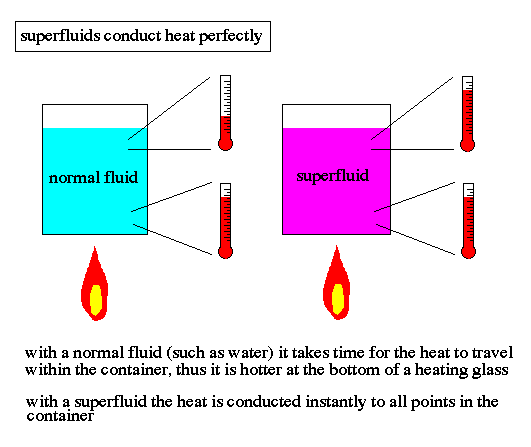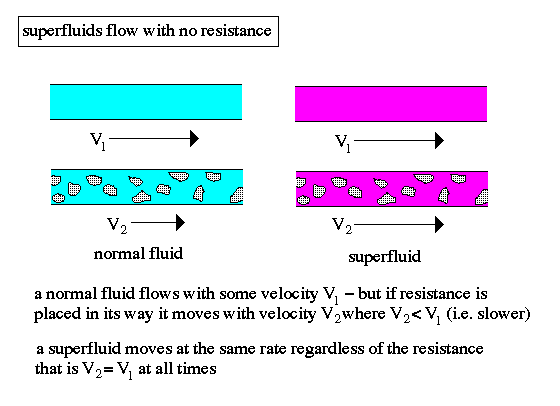Superfluids :
A superfluid is the unusual properties of liquid helium when it is
cooled below 2.18 K (-270.97 C), called the lambda point. The term
was coined in 1938 by the Soviet physicist Pyotr Kapitsa following an
extensive series of experiments showing that in this state of helium,
called helium II (He II), there is an apparent enormous rise in heat
conductivity, rapid flow through capillaries or over the rim of its
containment vessel as a thin film, and that a number of other unusual
properties also appear.
 In order to account for such behaviour, the "two fluid" model, as
proposed by Laszlo Tisza, described He II as a mixture of normal
helium and superfluid helium. The normal component is attributed to
helium atoms in excited energy states, whereas the superfluid
component is attributed to atoms all in the ground state (having
lowest or zero-point energy). As the temperature continues to be
lower below the lambda point, more of the He II becomes superfluid.
It is assumed that this superfluid component is able to move through
its container without friction, thereby explaining most of the
unusual behaviour of helium II.
In order to account for such behaviour, the "two fluid" model, as
proposed by Laszlo Tisza, described He II as a mixture of normal
helium and superfluid helium. The normal component is attributed to
helium atoms in excited energy states, whereas the superfluid
component is attributed to atoms all in the ground state (having
lowest or zero-point energy). As the temperature continues to be
lower below the lambda point, more of the He II becomes superfluid.
It is assumed that this superfluid component is able to move through
its container without friction, thereby explaining most of the
unusual behaviour of helium II.



